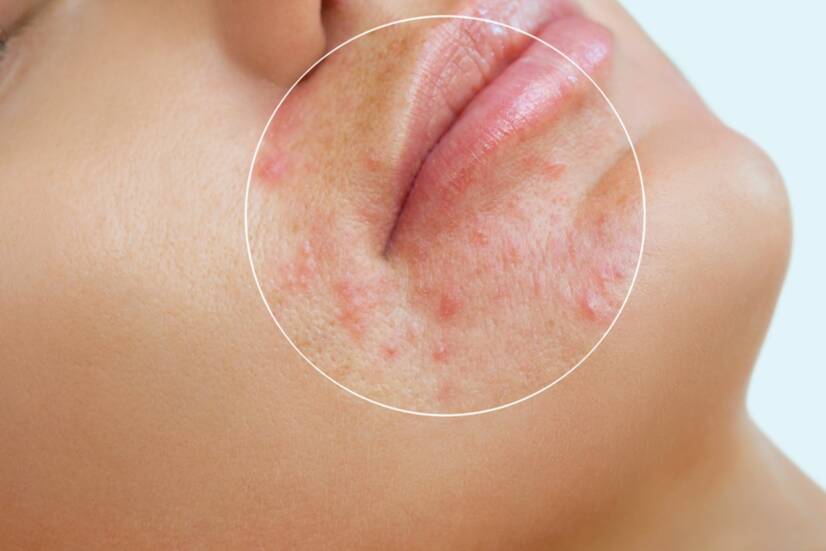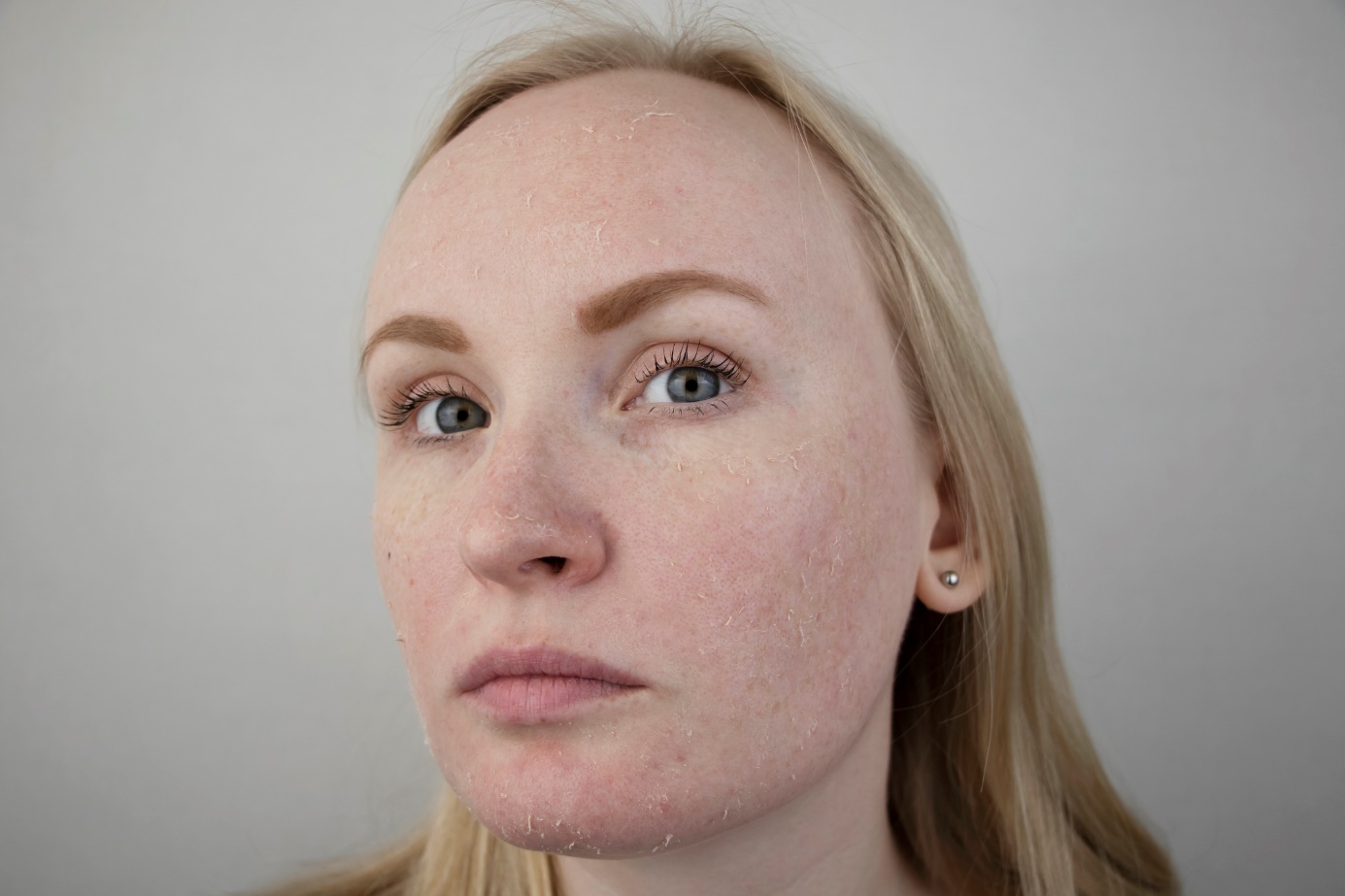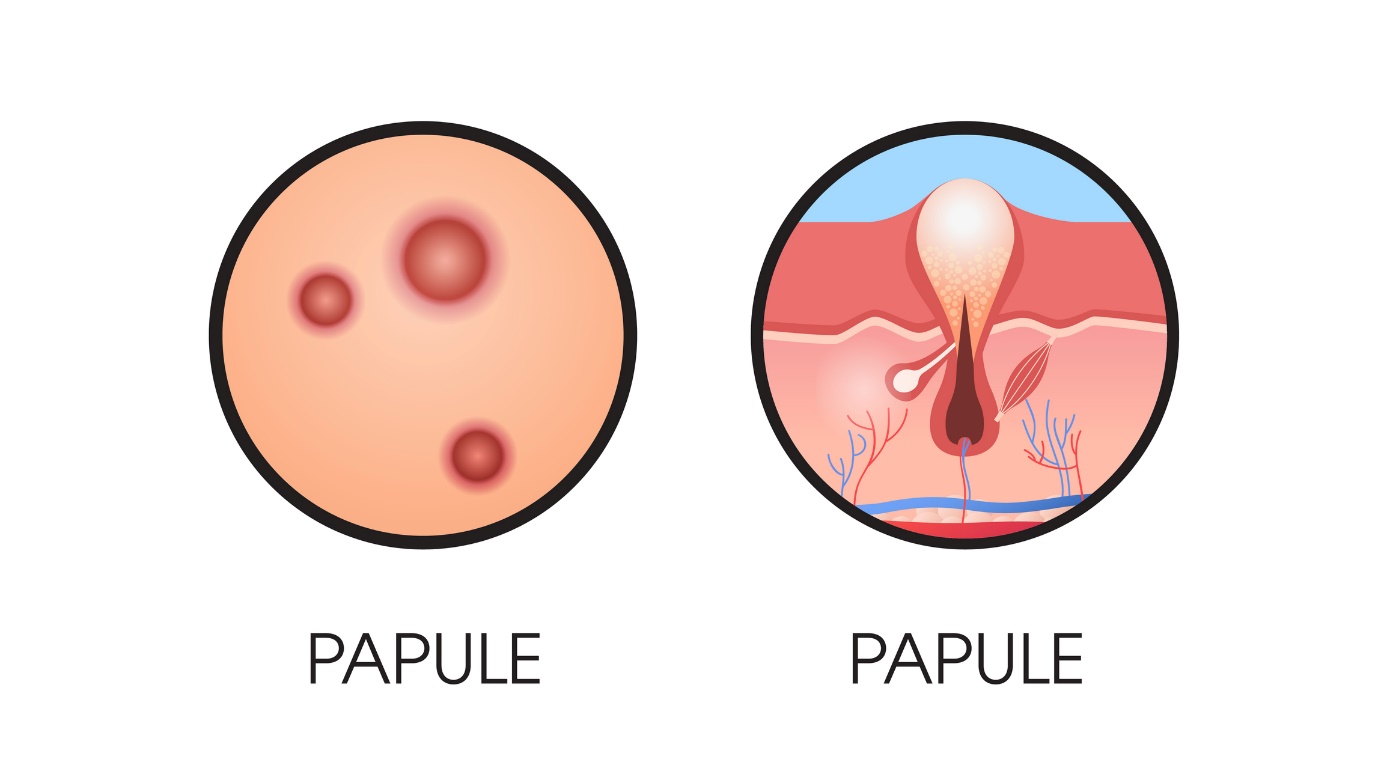- webmd.com - Perioral dermatitis
- ncbi.nlm.nih.gov - Perioral dermatitis
- dermatologiepropraxi.cz - pdf - Dermatitis perioralis, MUDr. Hana Duchková, DrSc. kožní sanatorium s. r. o., Ústí nad Labem
- prolekare.cz - Rosacea and dermatitis perioralis
- pediatriepropraxi.cz - pdf - Perioral dermatitis in children, MUDr. Zuzana Nevoralová, Ph.D.Acne clinic, skin department, Jihlava
Perioral dermatitis: what are the symptoms? What are the causes of the disease?

Perioral dermatitis is a common skin disease. Some confuse it with rosacea. Let's take a closer look at its causes and manifestations.
Most common symptoms
Characteristics
Perioral dermatitis is defined as a chronic, often recurrent skin disease affecting approximately 0.5-1% of the population. It is most common in women (90%) between the ages of 20 and 45. Children are also increasingly affected. In recent years, an increasing incidence has been noted in men.
The disease was first described by Frumes and Levis in 1957. At that time, it was known as light-sensitive seborrhoide. The current name was introduced in 1964. Perioral dermatitis came to the fore in 1966-1967. At that time, a mass epidemic was recorded in industrialized countries.
Synonyms:
- stewardess disease
- rose dermatitis
- light-sensitive seborrhoide
- periorificial dermatitis
Causes
The causes of perioral dermatitis are not fully understood.
It is believed that the origin of the disease is multifactorial. This means that the disease arises from a combination of genetic predisposition, environment and reaction to various stimuli. Perioral dermatitis can be caused and aggravated by external factors.
The most common factors that trigger the disease include:
- cosmetic products
- corticosteroids
- dry skin

The main risk factor is the long-term application of topical corticosteroids (ointments, creams). In practice, we encounter cases where the disease arises after inhaled, nasal or oral use of corticosteroids.
A common cause of the disease is the application of moisturizing creams. In this case, the method of application of the cream plays an important role. The disease is triggered by frequent application of moisturizing cream. Prolonged moisturizing of the stratum corneum damages the skin barrier.
The result is dry, irritated and inflamed skin.
The application of cosmetic products containing isopropyl myristate may also contribute to the development of perioral dermatitis. This substance is found in some anti-wrinkle night creams, make-ups and moisturisers.
Certain microorganisms also play an important role in the development of the disease:
- Candida species
- fusiform spirilla bacteria
- Demodex folliculorum mites
Perioral dermatitis can also be caused by contact with a partner's beard. The friction caused by such contact is included among the mechanical factors causing perioral dermatitis.
Other factors that may aggravate the course of perioral dermatitis include:
- products and water containing fluoride
- dental fillings
- contraceptives
- pregnancy
- congenital skin barrier disorders
- Crohn's disease
- myasthenia gravis
- UV radiation
- wind
- neglect of face washing
Symptoms
Symptoms of perioral dermatitis include:
- unilateral or bilateral seeding on the chin, around the upper lip, on the eyelids, cheeks and forehead
- perioral discharge
- clusters of 1-2 mm large pink papules and pustules
- dry skin
- burning of the skin
- pinching of the skin
- itching (very rare)
Papules are characterized as inflammatory lesions that differ in size and degree of inflammatory involvement.

Pustules are defined as whitish-colored rashes with a red inflammatory rim that are filled with pus.

Diagnostics
The diagnosis of perioral dermatitis is established on the basis of the clinical picture. A history focusing on the cosmetic products used is very important.
In the differential diagnosis, we must distinguish acne, rosacea, demodicosis, seborrheic dermatitis and atopic eczema.
Table: manifestations of the different diseases
| DISEASE | PROJECTIONS |
| Acne | The diagnosis of acne is usually straightforward. The disease is characterised by the formation of comedones, papules, pustules, cysts and scars. |
| Rosacea | The typical location of rosacea is the face. The manifestations of rosacea include redness, formation of telangiectasias, papules and pustules. The cause of the disease is not clear. |
| Demodicosis | The causative agent of the disease is the mite Demodex folliculorum. The manifestations appear mainly on the face. It presents with unilateral localisation. The diagnosis is confirmed by the presence of mites extruded from the follicles. |
| Seborrhoeic dermatitis | The typical manifestations of the disease are scaly patches on various parts of the face and trunk. Seborrhoeic dermatitis is characterised by symmetry of the manifestations. The causative agent of the disease is the yeast Malassezia spp. |
Course
The duration of perioral dermatitis varies. In children, the course of the disease is shorter (weeks, months) compared to adults. The disease may recur.
The manifestations of the disease are not infectious.
The typical symptoms are small red-coloured papules, papulovesicles to papulopustules. They arise on a reddened background. The redness omits the area just around the lips. This phenomenon is called perioral discharge.
The manifestations are most often found around the upper lip, on the chin and eyelids. In children, they are more likely to spread to the perinazal and periorbital area.
The granulomatous form of perioral dermatitis is specific. It occurs mainly in the prepubertal period in African Americans.
Are you familiar with lupoid perioral dermatitis?
The manifestations of the disease are characterized by dense aggregations of large papules. On examination, a typical lupoid infiltrate is seen. This form of the disease occurs after long-term topical corticosteroid treatment.
As a rule, the manifestations of lupoid perioral dermatitis do not itch, rarely patients experience burning or stinging. The manifestations of the disease usually disappear within a few weeks to months. Unfortunately, recurrences of the disease are quite common.
How does the wearing of masks affect the course of the disease?
The microenvironment under the drape/respirator is thought to have a negative effect on the course of perioral dermatitis.
In an Italian study, the authors evaluated the severity of symptoms during the wearing of drapes/respirators. Observations were made during a six-week period of drape/respirator wearing for at least 6 hours per day. The study concluded that the patients experienced a worsening of the clinical picture.
What are the preventive measures?
Wearing drapes/respirators on a daily basis causes pressure damage in the nasal and cheek bone area. As a prevention, we can use various methods. One of them is patches. We stick these as a continuous strip on the back of the nose or infraorbital area.
There are patches available on the market:
- hydrocolloid
- hydrogel
- silicone
- elastic foam
Another preventative measure is the use of a liquid spray barrier polymer film. This creates only a minimal risk of reducing the tightness of the drape/respirator fit. A barrier film should be the first choice in preventing the effects of drape/respirator pressure.
Wearing drapes/respirators can cause epidermal barrier breakdown in warm and humid microenvironments. Moisturizers and emollients are used in prevention.
How it is treated: Perioral dermatitis
Treatment of perioral dermatitis: medications, topical treatments, creams, gels and more
Show morePerioral dermatitis is treated by
Other names
Interesting resources
Related










